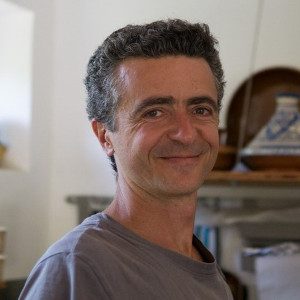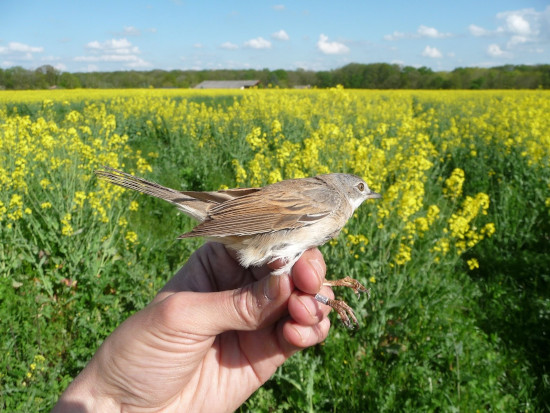
François Chiron
Position: Lecturer
Detailed position: Lecturer at University Paris-Saclay
Team: Ecological Processes and human Impact
Contact details:
Laboratoire Écologie, Systématique et Évolution – IDEEV
Université Paris Saclay
Bât. 680 – 12, route 128
91190 Gif Sur Yvette
Tel: –
Fax: –
Email: francois.chiron (at) universite-paris-saclay.fr
Research interests
Keywords : community, citizen science, indicators, biodiversity monitoring, traits, interactions, multi-taxa, management, landscape, birds, mammals, France, Europe
My scientific interests are united under the theme of conservation biology ; both its ecological basis (ex. population and community ecology) and its practical application. Since my Ph-d, I develop researches on animal and plant communities in the context of urban and agricultural environments.
I particularly interested in understanding patterns of biodiversity in response to main drivers linked to human activities (ex. land use changes), and how changes in biodiversity retroactively affect ecosystems function and human life. To this regard, I develop collaborations with social sciences for interdisciplinary researches. I mainly study birds and mammals, from local (ex. a cropped field, an urban green area) to national (France) and continent scale (Europe). I’m also interested in mechanisms explaining patterns and especially interactions between individuals within and between species.
My current projects are about ‘predictability of food and foraging behavior of birds’, ‘traits to explain animal vulnerability to pesticides’, ‘role of urban green areas and citizen science programs to conserve common birds’, ‘impact of CAP land-use changes on birds’, ‘restoration of food chain in agricultural systems by changing farming practices and restoring natural habitat around fields’, etc.
As a birder, I love doing fieldwork (bird watching, ringing, camera trapping) for my researches and my own curiosity. I am also engaged in the development of citizen science project like BirdLab (birds at feeders).

photo 1 : Common whitethroat (Sylvia communis) banded (photo F. Chiron)

figure 1 : Distribution of exotic bird richness in (a) the whole of Europe and (b) the UK at a 50×50 km grid square resolution. Verified introductions included in the analyses are marked with open circles. (Chiron et al. 2009)
Teaching
Since 2013, I teach ecology for Engineers and Master students (urban ecology, agroecology, field ecology) in close connection with my research topics. My courses address both theoretical and finalized dimensions of ecology in relation to these issues. They are therefore relatively transversal navigating between biological and social sciences, and between scientists, stakeholders, farmers, and other professionals.
Supervision
Lisa Lejemtel – Phd Student (2022-2025) : « Nature-based solutions in the city to alleviate social inequalities”
Camille Bernery – Post-doc (2023) : « Restoring food chains in agroecosystems »
Suzie Derminon – Phd Student (2021-2024) : « Temporal dynamics of urban ecosystems »
Gaelle Legras – Post-doc (2022) : « Management of urban green areas and functional biodiversity »
James Desaegher – Post-doc (2022) : « landscape gradient across natural, agricultural and urban areas for the richness of flower-visiting insects »
Lola Serée – Phd Student (2018-2021) : « Multifunctionality of agroecosystems in cereal plains »
Nicolas Deguines – Post-doc (2019) : « Ecological continuities in cities »
Romain Lorrillière – Post-doc and data management (2018) : « BirdLab : a serious game »
Aliénor Jéliazkov – Phd Student (2010-2013) : « Multiscale relationships between agriculture and biodiversity »
Audrey Muratet – Post-doc (2011-2012) : « Designing a protocol for monitoring the effects of chemical pesticides on biodiversity in Ile-de-France »
I also supervised work of several master students.
Career path
| Dates | Position | University |
| 2003-2007 | Ph-D | National Museum of natural History – Paris |
| 2007-2008 | Post-doc | Hebrew University of Jerusalem – Israel |
| Sept-nov. 2007 | Post-doc | Queensland University – Brisbane |
| 2009-2013 | Post-doc | National Museum of natural History –Sorbonne University Paris |
| 2013- | Assistant professor | AgroParisTech – Saclay |
Publications
Chiron F, Lorrillière R, Bessa-Gomes C, Tryjanowski P, Casanelles-Abella J, Laanisto L, Leal A, Van Mansel A, Moretti M, Muyshondt B, Niinemets Ü, Alós Ortí M, Pinho P, Samson R, Deguines N (2024). How do urban green space designs shape avian communities? Testing the area–heterogeneity trade-off. Landscape and Urban Planning, 242, 104954.
Desaegher J, Chiron F, Bessa-Gomes C (2023). Nationwide study of the triple landscape gradient across natural, agricultural and urban areas for the richness of flower-visiting insects. Biological Conservation, 288, 110355.
Serée L, Legras S, Chiron F, Valantin-Morison M, Gardarin A(2023). People prefer arable fields and flower strips with continuous soil cover and diversified vegetation. Ecology and Society. (IF = 4.7) https://doi.org/10.5751/ES-14098-280209
Van Mensel A, Wuyts K, Pinho P, Muyshondt B, Aleixo C, Alos Orti M, Casanelles-Abella J, Chiron F, Hallikman T, Laanisto L, Moretti M, Niinemets Ülo, Tryjanowski P, Samson R (2023). The magnetic signal from trunk bark of urban trees catches the variation in particulate matter exposure within and across six European cities. Enviromental Science & Pollution Research. https://doi.org/10.1007/s11356-023-25397-8
Swiderski C, Serée L, Crouzet O, Le Rasle S, Chiron F, Gardarin A (2023). Évaluation et valorisation de la biodiversité et des services rendus par les bandes fleuries en grandes cultures. Sciences Eaux & Territoires, 40 https://doi.org/10.20870/Revue-SET.2022.40.7321
Serée S, Barbottin A, Chiron F, Valantin-Morison M, Gardarin A (2023). Within-field floral resources have the potential to increase parasitism rates in winter oilseed rape pests more than resources at field margins. Agriculture, Ecosystems & Environment, vol. 344, pp. 108288 (IF = 5.4) https://doi.org/10.1016/j.agee.2022.108288
Muyshondt B, Wuyts K, Van Mensel A, Smets W, Lebeer S, Aleixo C, Alós Ortí M, Casanelles-Abella J, Chiron F, Puglielli G, Laanisto L, Moretti M, Niinemets Ü, Pinho P, Tryjanowski P, Woszczyło P, Samson R (2022). Phyllosphere bacterial communities in urban green areas throughout Europe relate to urban intensity. FEMS Microbiology Ecology, 98(10), fiac106 (IF = 4.2) https://doi.org/10.1093/femsec/fiac106
Alós Ortí M, Casanelles Abella J, Chiron F, Deguines N, Hallikma T, Jaksi P, Kwiatkowska PK, Moretti M, Muyshondtu B, Niinemets Ü, Pinho P, Pinto MJ, Saar P, Samson R, Tryjanowski P, Van Mensel A, Laanisto L (2022). Negative relationship between woody species density and urban green spaces in seven European cities. Urban Forestry & Urban Greening (IF = 4.5) https://doi.org/10.1016/j.ufug.2022.127650
Casanelles-Abella J, Keller A, Müller S, Aleixo C, Alós-Orti M, Chiron F, Laanisto L, Myczko Ł, Pinho P, Samson R, Tryjanowski P, Van Mensel A, Villarroya-Villalba L, Pellissier L, Moretti M (2022). Wild bee larval food composition in five European cities. Ecology (IF = 6.4)
Serée L, Chiron F, Valantin-Morison M, Barbottin A, Gardarin A (2022). Agricultural techniques, flower strips and landscape composition affect the dynamics of two aphid species and their natural enemies differently in faba bean crops. Agriculture, Ecosystems & Environment (IF = 5.4)
Casanelles‐Abella J, Müller S, Keller A, Aleixo C, Alós Orti M, Chiron F, … Moretti M (2022). How wild bee find a way in European cities: pollen metabarcoding unravels multiple feeding strategies and their effects on distribution patterns in four wild bee species. Journal of Applied Ecology. (IF = 6.5)
See the full list of my publications on research gate website
